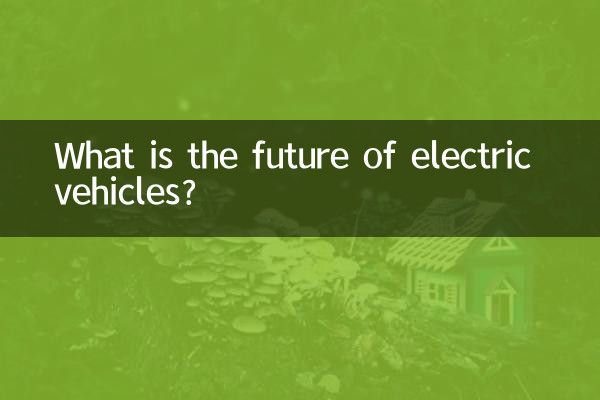What is the future of electric vehicles?
In recent years, the electric vehicle industry has developed rapidly around the world and has become an important direction of change for the automotive industry. With the advancement of technology, policy support and the improvement of consumers' environmental awareness, the electric vehicle market has shown explosive growth. This article will explore the development prospects of electric vehicles through structured data and analysis.
1. Current status of global electric vehicle market

According to hot topics and industry data in the past 10 days, the global electric vehicle market shows the following trends:
| index | data | illustrate |
|---|---|---|
| Global electric vehicle sales (2023) | About 14 million vehicles | A year-on-year increase of 35% |
| China market share | Accounting for 60% | The world's largest electric vehicle market |
| European electric vehicle penetration rate | more than 20% | Clearly driven by policy |
| U.S. electric vehicle sales | About 1.2 million vehicles | Slowing growth but great potential |
It can be seen from the data that China is still the leader in the electric vehicle market, while the markets in Europe and the United States are also growing steadily.
2. Technological breakthroughs and innovations
The advancement of electric vehicle technology is the core driving force for the development of the industry. The following are recent hot technology trends:
| Technical field | Latest developments | Influence |
|---|---|---|
| battery technology | Solid-state battery research and development accelerated | Extended battery life to more than 800 kilometers |
| Charging technology | Popularity of ultra-fast charging stations | 80% charge in 10 minutes |
| Autonomous driving | L4 level autonomous driving test | Improve user experience |
| lightweight materials | Carbon fiber is widely used | Reduce energy consumption |
Breakthroughs in these technologies will further lower the threshold for using electric vehicles and enhance market competitiveness.
3. Policy support and environmental protection needs
Governments around the world have introduced policies to support the development of electric vehicles, and consumers’ emphasis on environmental protection has also promoted market growth:
| Country/Region | Policy content | Target |
|---|---|---|
| China | “Dual Carbon” Strategy | New energy vehicles will account for 40% in 2030 |
| European Union | Ban on sales of fuel vehicles in 2035 | Fully electrified |
| USA | Inflation Reduction Act | Subsidies for electric vehicle purchases |
These policies provide a long-term and stable development environment for the electric vehicle industry.
4. Challenges faced
Despite its promising prospects, the electric vehicle industry still faces some challenges:
1.Insufficient charging infrastructure: Charging pile coverage in some areas is low, affecting user experience.
2.Battery raw material shortage: The supply of resources such as lithium and cobalt is tight, which may push up costs.
3.The used car market is immature: The value retention rate of electric vehicles is low, which affects consumer purchasing confidence.
5. Future Outlook
Taken together, the prospects for electric vehicles are very optimistic. As technology matures, policy support and market demand grow, electric vehicles will gradually replace fuel vehicles and become the mainstream means of transportation in the next 10 years. It is expected that by 2030, global electric vehicle sales will exceed 50 million units, with a market share exceeding 50%.
For consumers, electric vehicles are not only environmentally friendly, but also cheaper to use; for companies, seizing this trend will bring huge business opportunities. The future of electric vehicles is undoubtedly bright.
(Full text ends)

check the details

check the details